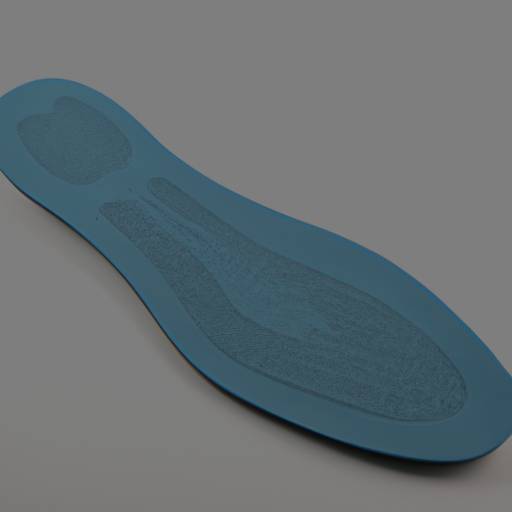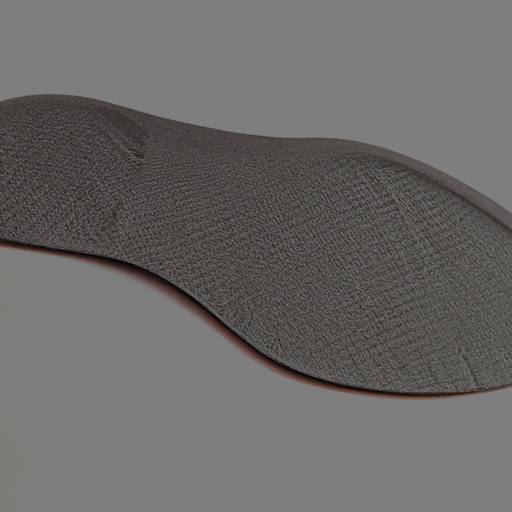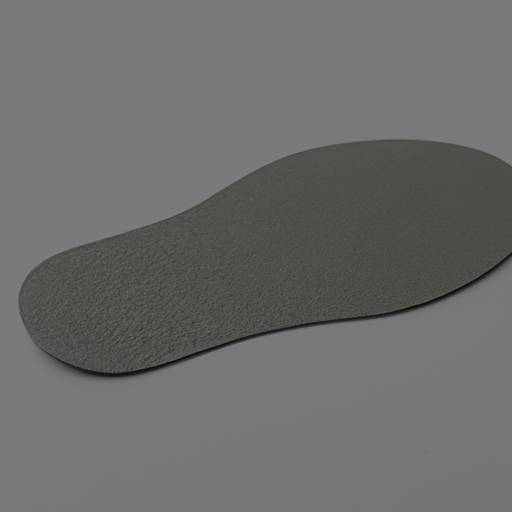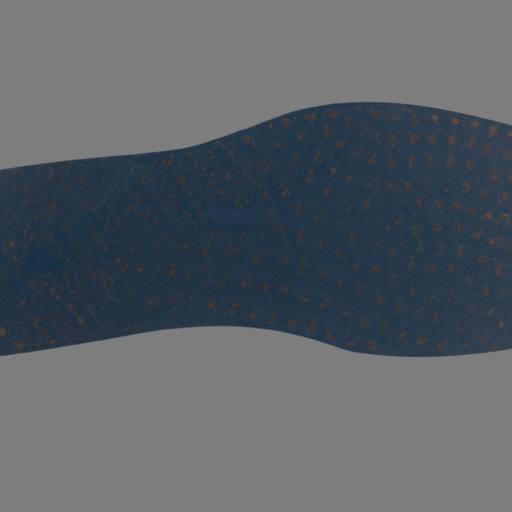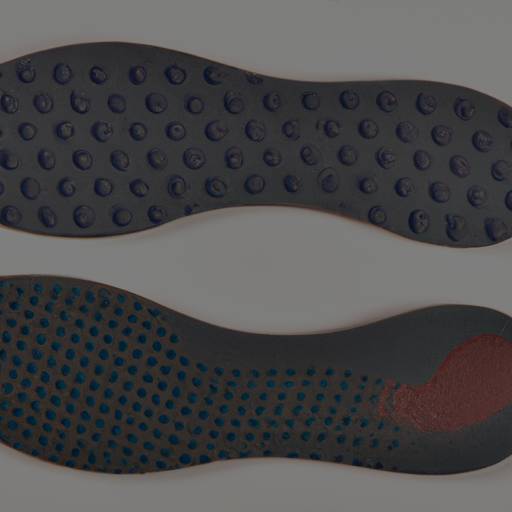The Differences Between Rigid and Flexible Orthotics: Choosing the Right Arch Support
Understanding Arch Support
When it comes to foot health and comfort, arch support plays a crucial role. The arches of our feet are designed to distribute body weight evenly and provide stability during movement. However, some individuals may have flat arches or high arches, which can lead to discomfort and various foot conditions. That’s where arch support comes in.
The Importance of Arch Support
Arch support refers to the added structure or cushioning provided to the arches of the feet to help maintain their natural shape and alignment. It can help alleviate pain, provide stability, and promote proper foot biomechanics. By supporting the arches, arch support also helps reduce the risk of developing foot conditions such as plantar fasciitis, shin splints, and overpronation.
With proper arch support, the weight is distributed more evenly across the foot, reducing excessive pressure on certain areas. This can alleviate discomfort and fatigue, allowing for improved posture and efficient movement. Arch support is especially beneficial for individuals who spend long periods on their feet or engage in activities that put extra strain on the feet, such as running or standing for extended periods.
Different Types of Arch Support
There are two main types of arch support: rigid orthotics and flexible orthotics. Each type offers unique benefits and is suited for different individuals based on their foot structure and specific needs.
Rigid Orthotics: Rigid orthotics are designed to provide firm support and stability to the arches. These orthotics are typically made of hard materials such as plastic or carbon fiber. Rigid orthotics are ideal for individuals with excessive pronation (inward rolling of the foot) or structural foot abnormalities. They help control foot motion and stabilize the arches, reducing pain and preventing further damage. For more information on rigid orthotics, visit our article on rigid arch support.
Flexible Orthotics: On the other hand, flexible orthotics offer cushioning and support without restricting foot movement. These orthotics are usually made of softer materials like foam or gel. Flexible orthotics are beneficial for individuals with high arches or those who require shock absorption and pressure relief. They provide a more customized fit and adapt to the unique contours of each foot, enhancing comfort and reducing the risk of foot fatigue. To learn more about flexible orthotics, visit our article on flexible orthotics.
Determining whether rigid or flexible orthotics are right for you depends on various factors, including your foot structure, lifestyle, and any existing foot conditions. It’s important to assess your needs and consult with a professional, such as a podiatrist or orthopedic specialist, to determine the most suitable type of arch support for you. They can evaluate your feet, discuss your symptoms and activity level, and recommend the appropriate orthotic solution.
Understanding the importance of arch support and the differences between rigid and flexible orthotics will help you make an informed decision when choosing the right arch support for your feet. By providing the necessary support and alignment, arch support can contribute to improved foot comfort, reduced pain, and enhanced overall foot health.
Rigid Orthotics
What are Rigid Orthotics?
Rigid orthotics are a type of arch support that provides firm and structured support to the feet. They are typically made from rigid materials such as hard plastics or carbon fiber. Rigid orthotics are designed to control and limit excessive motion in the feet and ankles, providing stability and alignment.
These orthotics are custom-made to fit the unique shape and needs of an individual’s feet. They are specifically tailored to address foot conditions such as overpronation (excessive inward rolling of the feet) or oversupination (excessive outward rolling of the feet). By providing strong support to the arches, rigid orthotics help distribute weight evenly and reduce strain on the feet and lower limbs.
Benefits of Rigid Orthotics
Rigid orthotics offer several benefits for individuals with foot conditions or those seeking enhanced arch support. Some key advantages include:
1. Stability: Rigid orthotics provide excellent stability and control over foot and ankle motion. They help maintain proper alignment, preventing excessive pronation or supination and reducing the risk of injuries.
2. Support: The firm and structured design of rigid orthotics offer significant support to the arches, helping to alleviate pain and discomfort caused by conditions like plantar fasciitis, flat feet, or high arches.
3. Enhanced Functionality: By correcting foot alignment and promoting proper biomechanics, rigid orthotics can improve overall foot function. This can lead to improved balance, reduced fatigue, and enhanced performance during physical activities.
4. Longevity: Rigid orthotics are known for their durability and longevity. They are designed to withstand the demands of daily use and can provide effective support for an extended period.
Remember, when considering orthotics, it’s essential to consult with a healthcare professional or a podiatrist. They can accurately assess your foot condition and recommend the appropriate type of orthotics for your specific needs. To learn more about the differences between rigid and flexible orthotics, continue reading our section on flexible orthotics.
Flexible Orthotics
When it comes to choosing the right arch support for your feet, flexible orthotics are a popular option. These orthotics are designed to provide support while still allowing for some degree of flexibility and natural movement.
What are Flexible Orthotics?
Flexible orthotics are typically made from materials such as soft foam, rubber, or silicone. Unlike rigid orthotics, which are made from harder materials, flexible orthotics offer a softer and more cushioned feel. They are designed to conform to the shape of your feet, providing a comfortable fit.
Flexible orthotics are particularly beneficial for individuals who require arch support but still want some flexibility in their footwear. They can help alleviate discomfort caused by conditions such as plantar fasciitis, flat feet, or general foot fatigue.
Benefits of Flexible Orthotics
There are several advantages to choosing flexible orthotics for your arch support needs. Here are some key benefits:
- Comfort: The soft and cushioned material of flexible orthotics provides a comfortable experience, making them suitable for extended periods of wear.
- Shock Absorption: Flexible orthotics help absorb shock and reduce impact during walking or other activities. This can alleviate stress on the feet, ankles, and joints.
- Flexibility: Unlike rigid orthotics, flexible orthotics allow for some degree of natural movement. They promote the natural flexibility of the foot, which can be beneficial for individuals who engage in activities that require foot mobility.
- Versatility: Flexible orthotics can be easily transferred between different pairs of shoes, allowing you to enjoy the benefits of arch support across various footwear styles.
- Adaptability: The soft and pliable nature of flexible orthotics enables them to mold to the contours of your feet, providing a customized fit and support.
It’s important to note that while flexible orthotics offer comfort and flexibility, they may not provide the same level of corrective support as rigid orthotics. Individuals with specific foot conditions or those requiring more substantial support may find rigid orthotics to be more suitable. Consulting with a healthcare professional or podiatrist can help determine the best arch support option for your specific needs.
When considering arch support insoles, be sure to explore the differences between rigid orthotics and flexible orthotics to make an informed decision. Remember, the right arch support is crucial for maintaining proper foot alignment, reducing discomfort, and promoting overall foot health.
Deciding Which Arch Support is Right for You
When it comes to choosing the right arch support, it’s important to consider your individual needs and consult with a professional. Here are two key steps to help you make an informed decision.
Assessing Your Needs
Start by assessing your specific foot condition and the level of support required. Consider factors such as the shape of your arches, any existing foot conditions or injuries, and your daily activities.
If you have high arches or require significant support, rigid orthotics may be the best option for you. Rigid orthotics are designed to provide maximum support and control for the feet. They are typically made of firm materials and are especially beneficial for individuals with conditions such as plantar fasciitis or flat feet. However, it’s important to note that rigid orthotics may require an adjustment period, and some individuals may find them initially uncomfortable. If you experience any discomfort, consult with a professional for adjustments or alternative options.
On the other hand, if you have more flexible arches or need moderate support, flexible orthotics can be a suitable choice. Flexible orthotics are made of softer materials that provide cushioning and gentle support. They are designed to improve shock absorption and enhance overall comfort. Flexible orthotics are often recommended for those with conditions such as arthritis or mild foot pain. They offer a balance between support and flexibility, making them more comfortable for extended periods of wear.
Consulting with a Professional
To ensure you select the most appropriate arch support, it’s highly recommended to consult with a healthcare professional or a podiatrist. They can assess your specific needs, perform a gait analysis, and provide personalized recommendations based on your foot structure, condition, and lifestyle.
A professional will be able to determine whether you require rigid or flexible orthotics based on your foot mechanics and individual requirements. They may also take into account any pre-existing conditions or factors that could affect your choice of arch support. By consulting with an expert, you can ensure that you make an informed decision that will effectively address your foot concerns and provide the necessary support.
Remember, finding the right arch support is essential for maintaining proper foot alignment and alleviating discomfort. By assessing your needs and seeking professional guidance, you can choose the arch support that will best support your feet and improve your overall foot health.
Caring for Your Orthotics
Once you have chosen the right orthotics for your arch support needs, it’s important to properly care for them to ensure their longevity and effectiveness. Here are some cleaning and maintenance tips as well as information on replacing your orthotics when necessary.
Cleaning and Maintenance Tips
To keep your orthotics in good condition, regular cleaning and maintenance are essential. Here are some tips to help you take care of your orthotics:
- Remove and clean: Regularly remove your orthotics from your shoes to clean them. This will help prevent the buildup of dirt, sweat, and odor.
- Hand wash: Use a mild soap and warm water to gently clean your orthotics. Avoid using harsh chemicals or abrasive cleaners that could damage the materials.
- Dry thoroughly: After cleaning, make sure to dry your orthotics thoroughly before placing them back in your shoes. Moisture can lead to bacterial growth and unpleasant odors.
- Air dry: Allow your orthotics to air dry naturally. Avoid using direct heat, such as hair dryers or heaters, as excessive heat can warp or distort the materials.
- Avoid extreme temperatures: Keep your orthotics away from extreme temperatures, as they can affect the integrity of the materials. Avoid leaving them in hot cars or exposing them to excessive cold.
- Inspect regularly: Take the time to inspect your orthotics for any signs of wear or damage. Look for cracks, tears, or changes in the shape that could affect their effectiveness.
Remember that the specific care instructions for your orthotics may vary depending on the materials used. Always refer to the manufacturer’s guidelines for the best care practices.
Replacing Your Orthotics
While orthotics are designed to be durable, they will eventually wear out over time. Regular use, pressure, and natural aging of the materials can affect their effectiveness. It’s important to recognize when it’s time to replace your orthotics. Here are some signs that indicate it may be time for a replacement:
- Visible wear and tear: If you notice visible signs of wear and tear, such as cracks, tears, or fraying, it’s time to consider replacing your orthotics. Damaged orthotics may not provide the necessary support and comfort.
- Decreased effectiveness: If you start experiencing foot pain or discomfort that was previously alleviated by your orthotics, it could be an indication that they have lost their effectiveness. Over time, the materials may compress or lose their shape, reducing their ability to provide proper support.
- Changes in foot condition: If you have experienced changes in your foot condition, such as a new injury or a change in your arch profile, you may need orthotics with different specifications. Consult with a healthcare professional to assess whether new orthotics are necessary.
Remember that the lifespan of orthotics can vary depending on factors such as usage, activity level, and the materials used. It’s generally recommended to replace orthotics every 1 to 2 years, but it’s important to monitor their condition and consult with a healthcare professional for personalized advice.
By following these cleaning and maintenance tips and knowing when to replace your orthotics, you can ensure that your arch support remains effective and provides the necessary comfort and stability for your feet.

